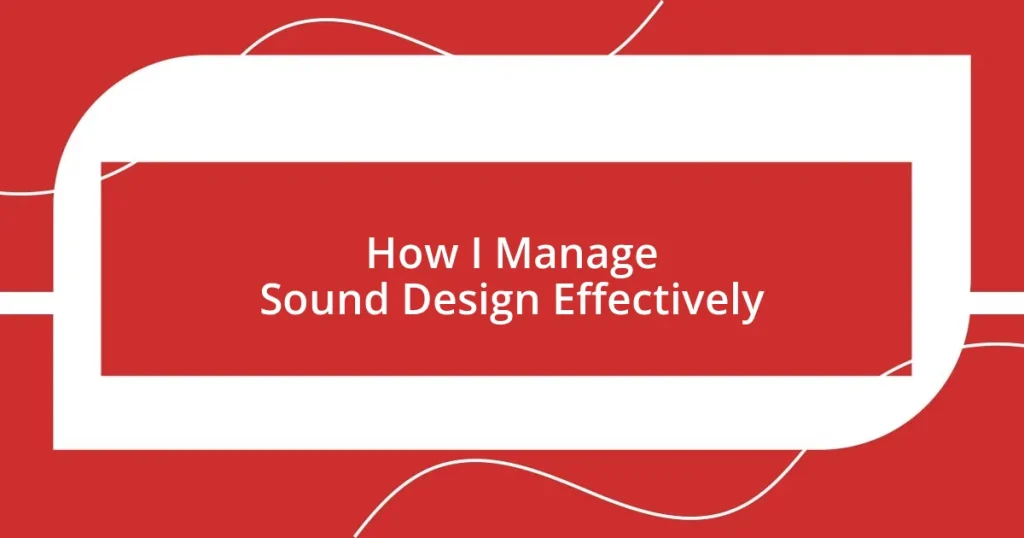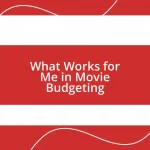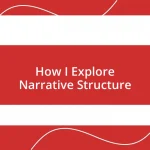Key takeaways:
- Sound design comprises three main components: recording, editing, and mixing, each critical for creating immersive auditory experiences.
- Tools such as DAWs, field recorders, and quality microphones are essential for effective sound design, significantly enhancing audio quality and efficiency.
- Organizing a sound library with methods like tagging improves workflow and speeds up the creative process by making sounds easily accessible.
- Collaboration and receiving feedback from peers is vital for expanding creativity and refining sound design projects through constructive dialogue.
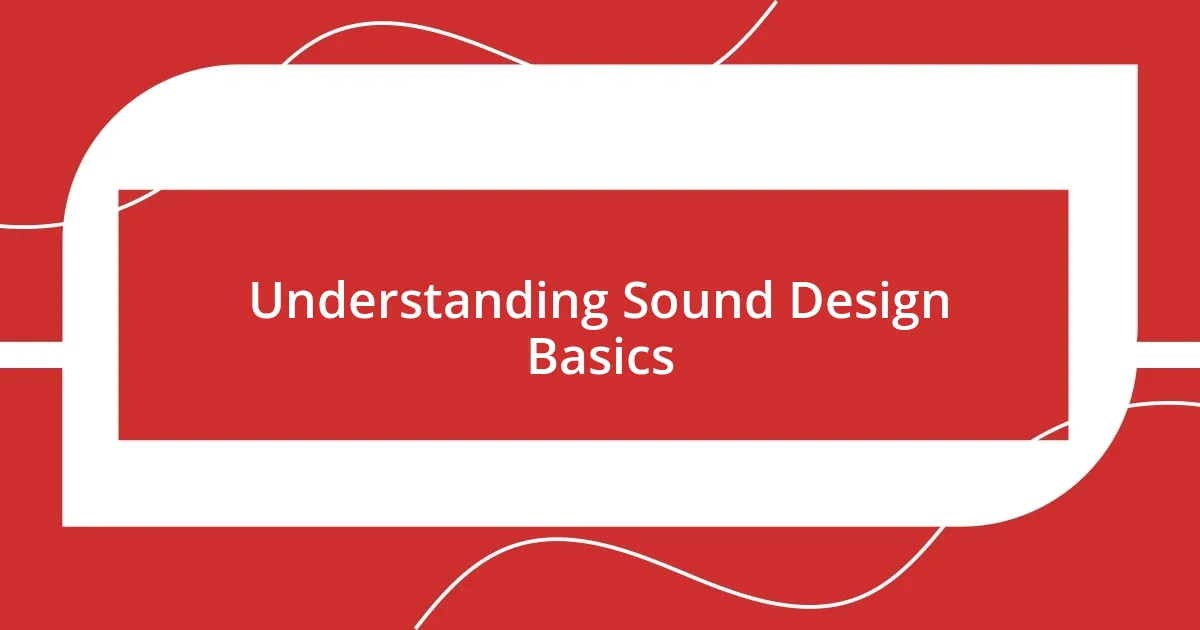
Understanding Sound Design Basics
Sound design is all about creating an auditory experience that complements the visual aspects of a project. I remember the first time I experimented with layering sounds for a short film. It was fascinating to see how different audio elements could transform a scene, making it feel more immersive. Have you ever noticed how a soft whisper can evoke tension, while a sweeping score can elicit joy?
At its core, sound design involves three key components: recording, editing, and mixing. Each part plays a critical role in how the final product is perceived. For example, I’ve found that capturing crisp, clean dialogue is crucial during recording, as it sets the foundation for everything else. Have you ever tried recording in a noisy environment? The challenges can be overwhelming, but that’s where creativity shines – finding ways to work around distractions.
Understanding the nuances of sound can elevate your project from good to unforgettable. Take the time to explore different sound sources and techniques; you might stumble upon something unexpected that perfectly fits your vision. When I first experimented with Foley – creating everyday sound effects in post-production – I was amazed at how these little details could add so much depth. Isn’t it incredible how something as simple as the rustle of clothing can draw an audience deeper into a story?
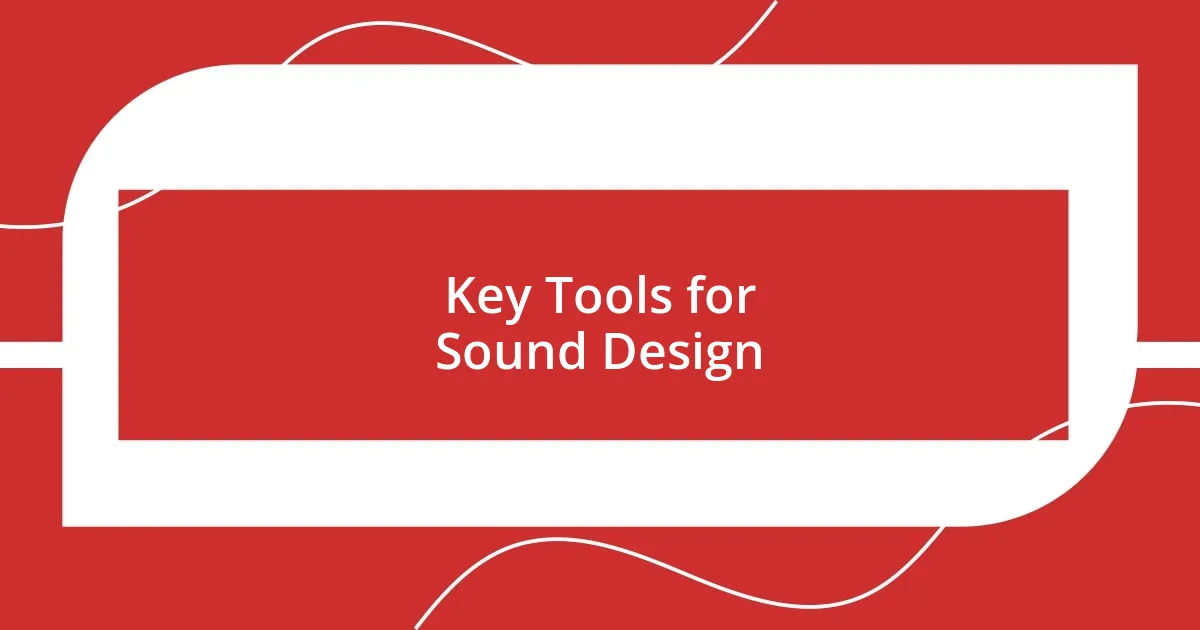
Key Tools for Sound Design
When tackling sound design, having the right tools can make a world of difference. Throughout my journey, I’ve relied heavily on a few essential software and hardware tools that streamline the process. For instance, the first time I used a digital audio workstation (DAW) like Ableton Live, it felt like unlocking a treasure chest of possibilities. I was amazed at how easily I could manipulate sounds and create layers, enhancing my projects beyond my initial imagination.
Here are some key tools that I consider indispensable for effective sound design:
- Digital Audio Workstations (DAWs): Software like Pro Tools, Logic Pro, or Ableton Live allows for recording, editing, and mixing sound with precision.
- Field Recorders: Devices like Zoom H4n are perfect for capturing unique ambient sounds and sound effects on the go.
- Plugins: Tools like iZotope RX and Serum can enhance audio tracks, offering a range of sound processing options.
- MIDI Controllers: These handy devices help to create and manipulate sounds in a more tactile manner, giving you a real sense of control.
- Microphones: Using quality mics, like the Shure SM7B, can significantly improve sound capture, adding richness to dialogue or sound design elements.
I still remember when I invested in a good pair of studio headphones. It was like switching from a black-and-white movie to full HD. I could hear the tiniest nuances in my edits, making it easier to craft the perfect soundscape. That attention to detail is what truly brings your sound design to life.
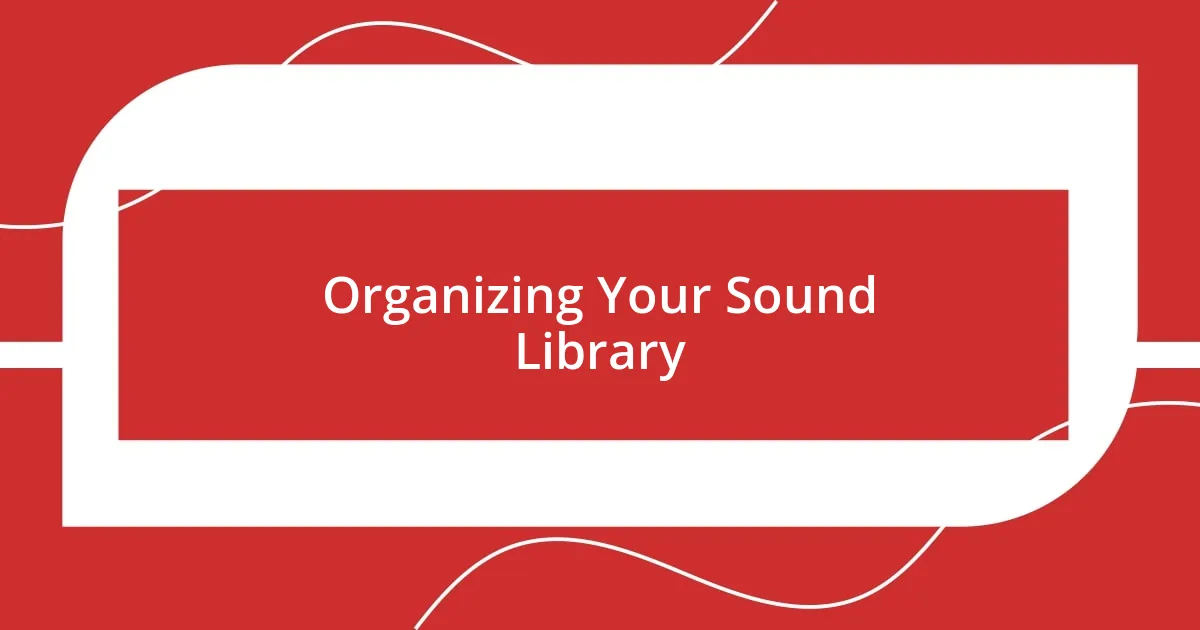
Organizing Your Sound Library
Organizing your sound library might seem mundane at first, but I assure you, it can drastically improve your workflow. Early in my career, I struggled with locating the right sound effect at crucial moments. I remember a specific project where I spent over an hour searching through endless folders. That experience taught me the importance of having a well-structured library. I now categorize sounds by type, mood, and genre, making it far easier to find what I need quickly.
One effective method I use is tagging. By assigning descriptive tags to each sound file, I can identify specific characteristics, like pitch or tempo. This way, when I’m in a creative flow, I can simply type a keyword and voilà—my options appear instantly! I can’t express how liberating that feels, especially when time is of the essence. Have you ever been in a position where creativity strikes, but you can’t find the sound that fits? Tagging can save you from that frustration.
To illustrate the difference between various organizing strategies, consider the table below. It highlights different methods for sound library organization, each with its own strengths.
| Method | Benefits |
|---|---|
| Folder Hierarchy | Easy navigation, intuitive structure |
| Tagging System | Quick search capabilities, flexible categorization |
| Mood-based Organization | Encourages creative exploration, based on project needs |
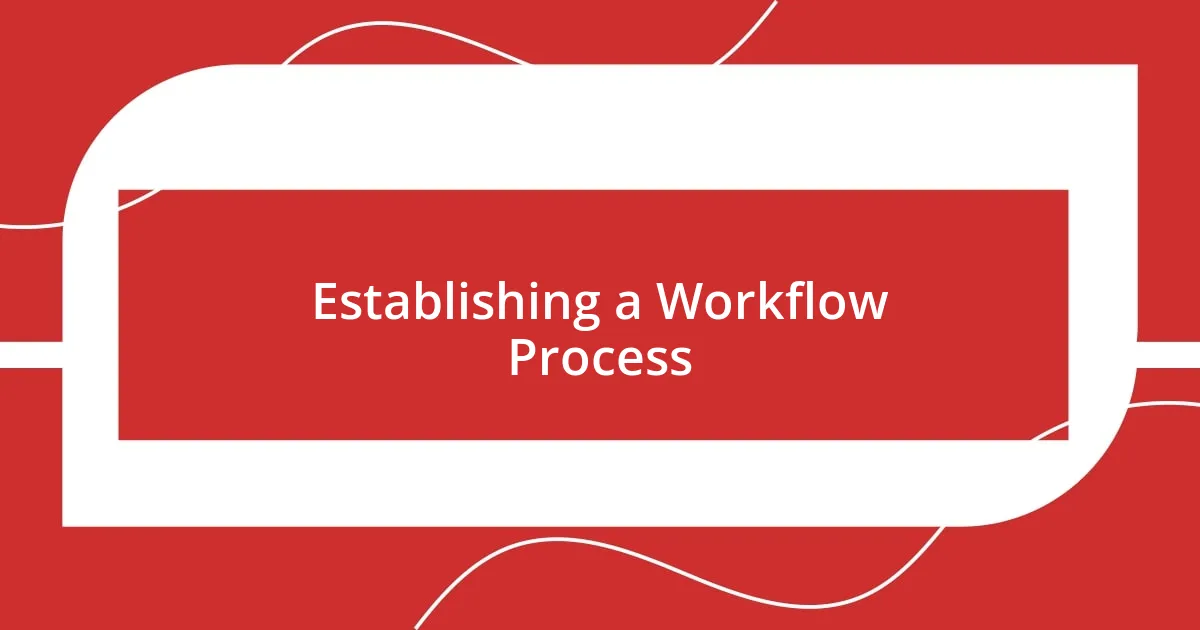
Establishing a Workflow Process
Establishing a workflow process in sound design is crucial for efficiency and creativity. I’ve found that starting each project with a structured plan helps me stay focused and organized. One specific technique I adopt is creating a checklist that outlines each step from initial brainstorming to final tweaks. Have you ever felt overwhelmed when diving into a new project? That checklist serves as my safety net, guiding me seamlessly through the complexities of sound design.
Another key aspect of my workflow is implementing dedicated time slots for each stage. Personally, I allocate mornings for sound exploration and recording, while afternoons are reserved for editing. This division not only prevents burnout but also enhances productivity. Think about your own routine—do you carve out specific times for different tasks? When I respect these boundaries, I can immerse myself in the creative process without the distracting pull of unfinished tasks nagging at my mind.
Moreover, I always prioritize regular reviews of my work at each stage. After completing an editing session, I take a break and return with fresh ears, allowing me to hear things I might have missed. Can you recall a moment that felt off, but you couldn’t quite figure out why? That reflective listening has been a game changer for me, revealing subtle inconsistencies in my sound design that I would otherwise overlook. By fostering this habit, I’ve significantly improved the quality of my projects and the satisfaction I derive from my work.
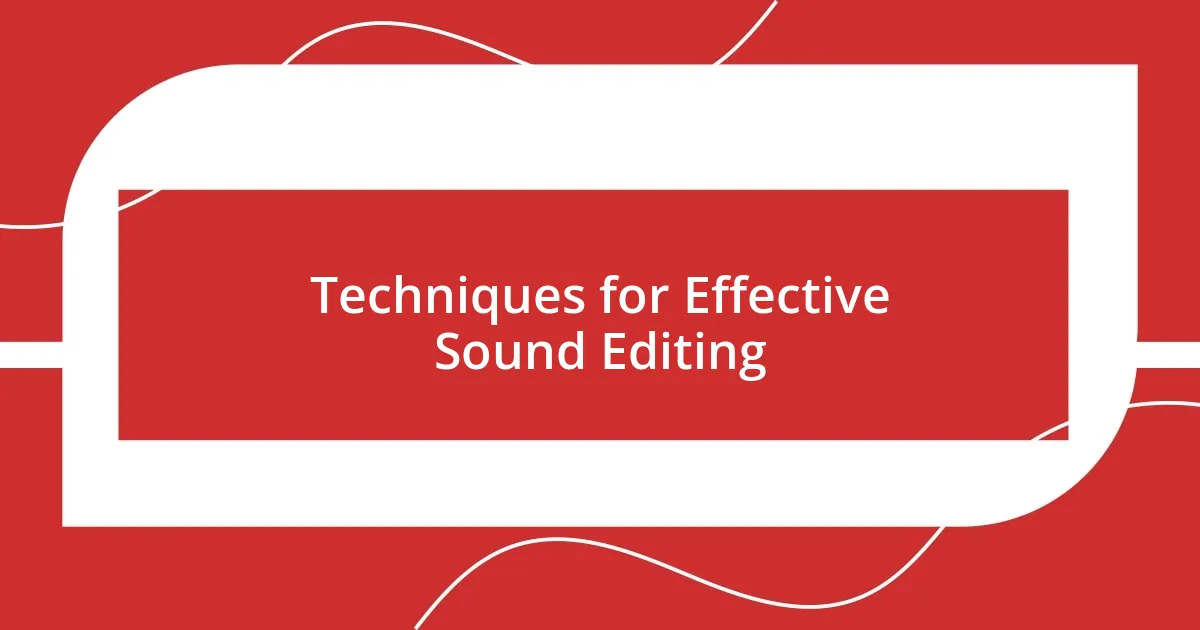
Techniques for Effective Sound Editing
When it comes to effective sound editing, one technique I swear by is using high-quality reference tracks. These tracks serve as benchmarks, allowing me to compare and evaluate the sound quality and clarity of my work. I remember working on a project where the final mix just wasn’t hitting the right emotional notes. After I analyzed reference tracks, I discovered that slight adjustments in EQ made a world of difference. Have you ever felt like something was off but couldn’t pinpoint what? Using references really helps to bridge that gap.
Another approach I find incredibly valuable is experimenting with sound layering. By combining different sound elements, I create a rich auditory experience that captivates listeners. I once layered ambient sounds with subtle musical cues for a short film, which transformed an ordinary scene into something immersive. Doesn’t it feel thrilling to push creative boundaries like that? It’s all about finding the right balance; too many layers can clutter the mix, whereas too few can leave it feeling flat. I’ve learned to trust my instincts and always listen critically.
Lastly, I can’t emphasize enough the importance of using automated volume controls and panning. These features allow me to bring sounds in and out of the mix dynamically, enhancing the storytelling aspect of my projects. I often automate the sound of distant thunder that gently swells, creating tension before a pivotal scene. That subtle nuance adds depth that resonates emotionally with the audience. Have you tried automation yet? It’s a game changer in ensuring that every sound serves a purpose, elevating the overall narrative.
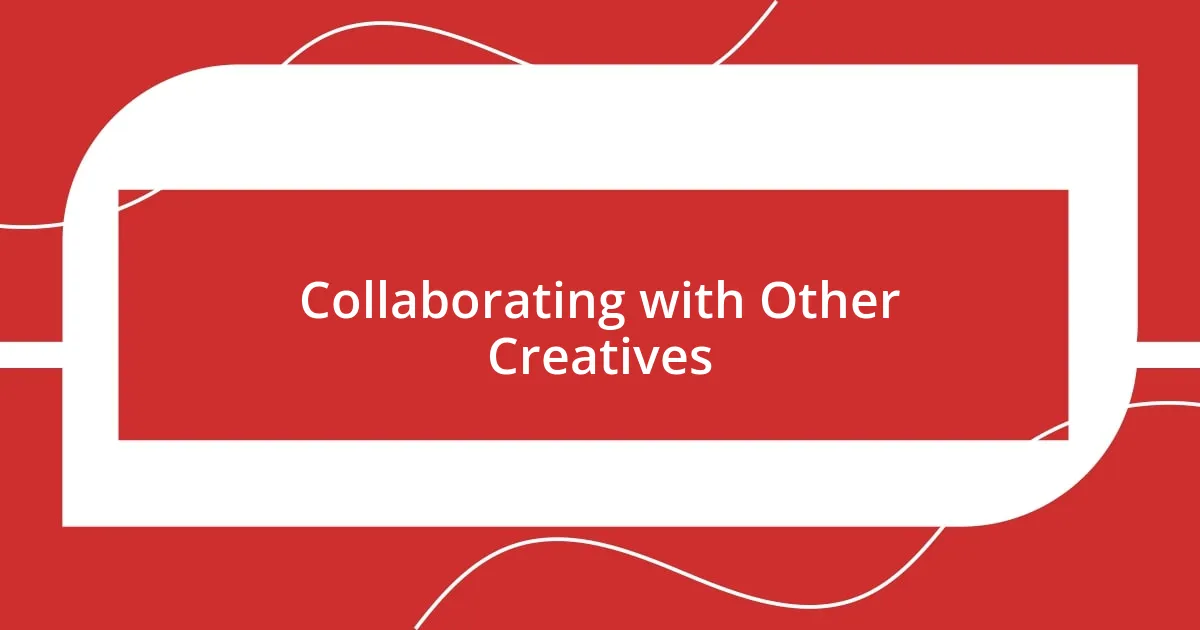
Collaborating with Other Creatives
Collaborating with other creatives has been one of the most rewarding aspects of my sound design journey. I vividly recall working alongside a talented director on a short film, where our combined visions really shone through. We held brainstorming sessions that felt electric—ideas bounced around the room like popcorn. Have you ever had those moments where collaboration just ignites creativity? It’s this synergy that often leads to unexpected and beautiful results.
I’ve learned that clear communication is essential when teaming up with others. In one project, I misinterpreted a colleague’s vision for a soundscape, leading to confusion later on. By scheduling regular check-ins and sharing sketches of sound ideas, we avoided similar misunderstandings. Isn’t it fascinating how a simple conversation can clear the fog? I find that taking the time to articulate my concepts not only enriches the collaboration but also strengthens my own understanding of the project.
Additionally, embracing feedback from my fellow creatives has expanded my perspective in unimaginable ways. There have been occasions when I’ve locked myself into a particular sound choice, convinced it was perfect. Yet, upon hearing my collaborator’s insights, I was able to step back and reassess. Isn’t it incredible how another set of ears can unveil possibilities we might overlook? This practice has taught me that collaboration is not just about merging ideas; it’s about growing together through constructive dialogue and shared experiences.
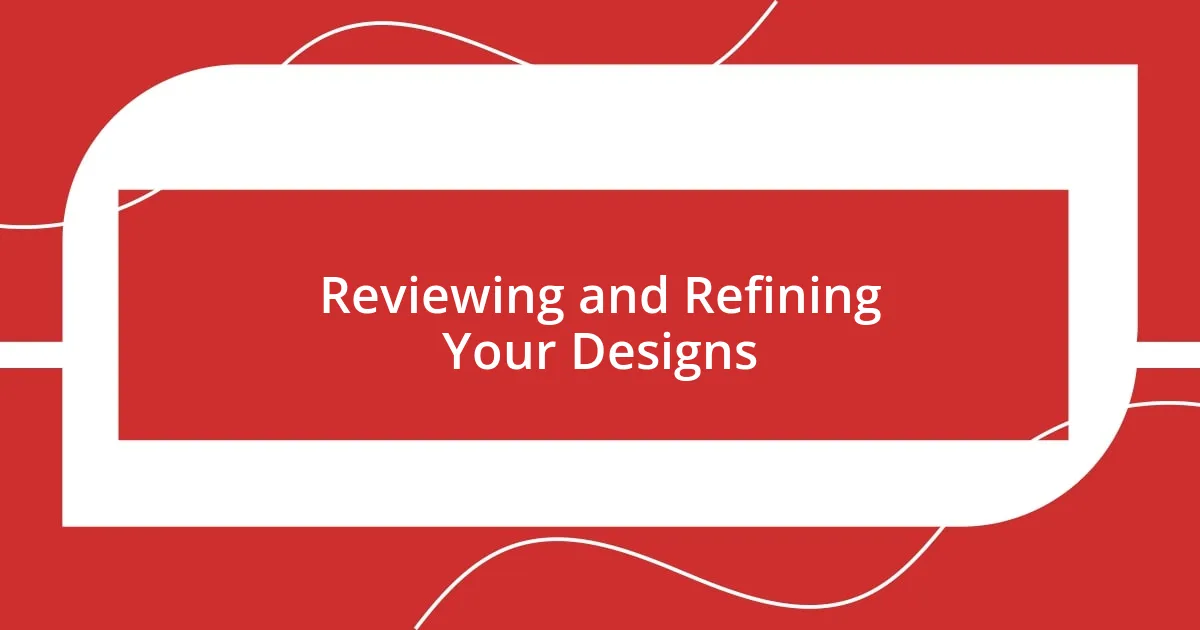
Reviewing and Refining Your Designs
To effectively review and refine your sound designs, I make it a point to step away from my work for a bit. When I return with fresh ears, I often find elements that need tweaking. There was a time where I had spent hours on a sound loop, convinced it was perfect. Yet, after a short break, I realized it felt overly repetitive. Have you ever experienced that clarity after some distance? I’ve found that this practice not only reveals overlooked issues but also sparks new ideas.
Another technique I embrace is gathering feedback from trusted peers. After finishing a project, I usually invite colleagues over for a listening session. It’s always fascinating to hear their reactions and thoughts. Once, a colleague pointed out that a particular transition felt abrupt, which encouraged me to dive deeper into blending sounds more cohesively. Is it surprising how our ears can sometimes become too accustomed to our own work? Engaging with others brings a fresh perspective that can elevate the overall quality of my designs.
Lastly, I conduct thorough listening tests using different devices. I often switch between my studio monitors, headphones, and even my phone. I vividly remember adjusting a soundscape that sounded mesmerizing on my studio setup but fell flat on my phone. It was a wake-up call! How many times have we assumed our designs would hold their magic across all platforms? This process of refining through varied playback systems is crucial to ensure that the final sound resonates with audiences, no matter how they experience it.










